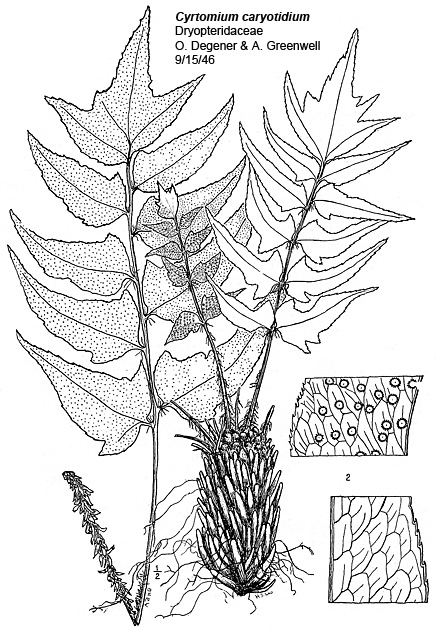|
Hardy Fern Home C. caryotideum resources
All Ferns � Dryopteridaceae �� Cyrtomium
�Other Genera
|
| Cyrtomium caryotideum | ||
Dwarf holly fern | ||
|
Etymology
Caryotideum means Caryota-like, and that comes from the genus Caryota, palms with pinnate leaves.
Description
Rhizome: erect, short, a few fronds in a tuft, becoming massive in age, scales dark brown, 1--1.5 cm long.
Frond: 70 cm high , evergreen, monomorphic, blade/stipe ratio: 2:1. Stipe: rather densely scaly at base, vascular bundles: 4 or more, in an arc. Blade: 1-pinnate, oblong-lanceolate, leathery, gray-green, filiform scales below, glabrous above. Pinnae: 3 to 6 pair, large, sometimes with pointed ears at the base, a terminal pinna largest; margins minutely serrate, spiny; veins netted. Sori: round, small, in 2 or 3 rows parallel to the midrib, indusium: peltate, grayish, sometimes darker in center, central, sporangia: brown. Culture
Habitat: on muddy crevices of limestone in mountain forests.
Distribution: Japan, China, Philippines, Vietnam, Hawaii.
Hardy to -20�C, USDA Zone 6.
Synonyms
Aspidium caryotideum Wall. ex Hook. et Grev. Polystichum caryotideum (Wall.) Diels |
|
|
